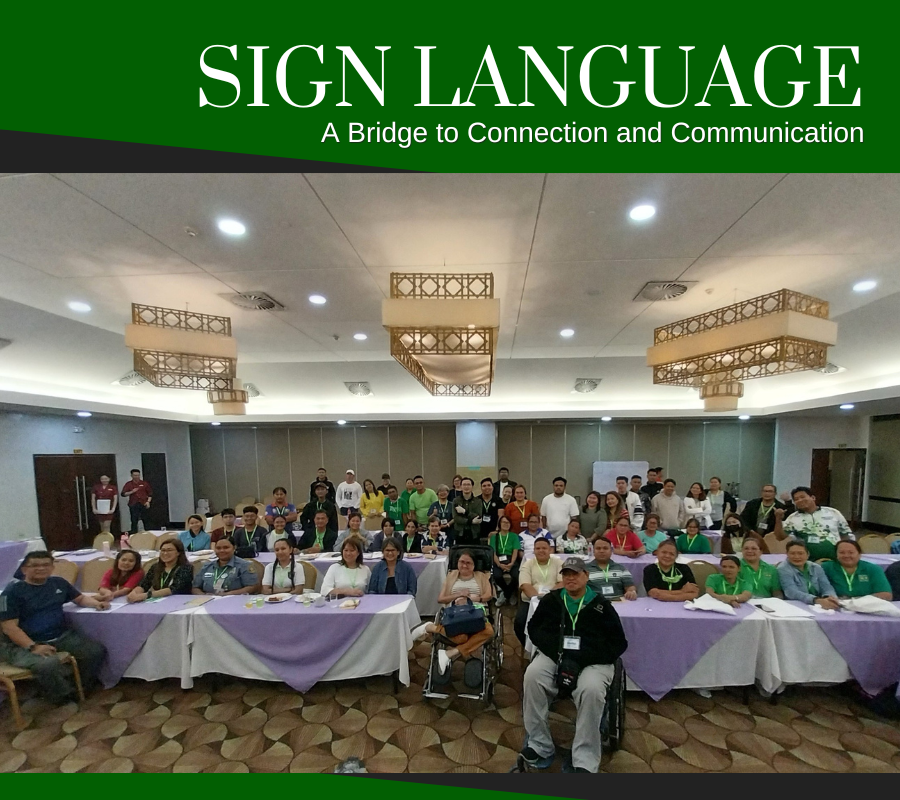Overview
This training program introduces the essentials of sign language, enabling learners to enhance both their expressive and receptive language abilities. It encompasses basic vocabulary, grammatical structures, and an understanding of cultural nuances.
Learning Outcome
Upon finishing this training, learners will acquire a foundational knowledge of Deaf culture and cultivate the skills necessary to engage in basic sign language conversations, integrating its key principles.
Topics Covered

DEAF CULTURE
Deaf culture is unique and based on a signed language, with its own identity, language, values, traditions, and behavior norms that are specific to the Deaf community.

THE FIVE PARAMETERS OF SIGN
The five parameters of sign describe how a sign behaves within the signer’s space: Handshapes, Palm Orientation, Movement, Location and Non-Manual Signals (NMS) or expressions.

BASIC CONVERSATIONS
To initiate a converation with a deaf individual, it’s essential to learn how to introduce yourself using sign language. Greetings, farewells, and introductions are included in this lesson.

FEELINGS AND EMOTIONS
Because sign language is naturally expressive, expressing your feelings and emotions when signing is easy.

FAMILY MEMBERS
In this lesson, you will learn family vocabulary, which is a common topic for conversation.

THE PEOPLE AROUND US
Acquire the ability to sign vocabulary tailored to individuals and their professions.

FOOD, DRINKS, AND RELATED SIGNS
Learn the signs for vocabulary related to food and beverages, along with associated signs.

PLACES AND TRANSPORTATION
Familiarize yourself with vocabulary related to locations, transportation, finances, and associated signs.

ACTION VERB WORD
Learn your action verbs in sign language – a vital part in conversational sign language.

OPPOSITE WORDS
Learn about common opposite pairs in sign language. Every so often, if you learn one word, you may be able to guess how to sign a word with the opposite meaning. This is the beauty of learning opposite signs.
Signing and Singing Goes Beyond Inclusivity
THE LORD’S PRAYER
In the book of Mattew, Jesus used the Lord’s Prayer as a simple example of how to pray to God.
Includes 33 illustrated signs.

LUPANG HINIRANG
The national anthem of the Philippines. Its music was composed by Julian Felipe in 1898.
Includes 38 signs.

A four-day basic sign language training is being offered for city employees and PWD officers of the Las Pinas City Social Welfare and Development Office and the Persons with Disability Affairs Office. The goal is not to create certified interpreters, but rather to empower each participant to become a bridge for connection and communication.
Read more: Sign Language Training